Should you roll your shins with glass bottles, hit them with a stick, or go Thai-style and kick banana trees to the ground? In this article, you learn the best way to condition your shins as a Muay Thay Kickboxing fighter.
The best ways to condition your shins are:
- Kicking the heavy bag and Thai pads
- Practicing kicking techniques with a partner
- Sparring
This way, you expose your shins to the type of impact that they need conditioning for. It increases your pain tolerance and hardens your shinbones.
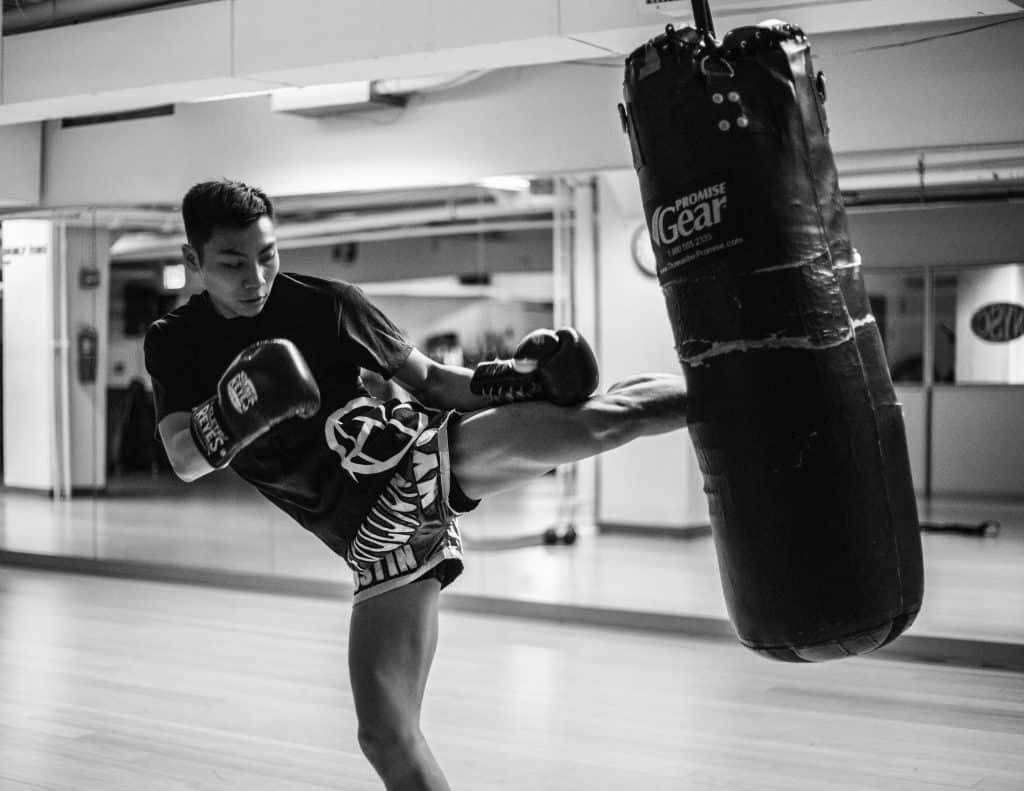
But what about these bottles, sticks, or banana trees? These also increase pain tolerance and harden shins, right? That’s correct, but in what follows I’ll explain why these are less effective methods. In addition, I’ll discuss alternative exercises to harden your shins and how you can quickly heal shin injuries.
Why does hitting your shin hurt so much?
When you start with a kicking sport like Kickboxing or Muay Thai, your shinbones haven’t hardened yet and the nerves around them are still sensitive. For that reason, you will almost immediately feel pain when you hit a boxing bag – even if you kick softer than your more experienced training partners.
Every next kick will only hurt more… and more. To “solve” this, you’ll start holding back on your kicks and instead spend your energy on trying to avoid hitting those painful spots again. The result? Your training feels horrible and you’re ruining your technique.
Does hitting your shins make them stronger?
According to “Wolff’s Law,” microfractures – small dents or cracks – in your bone will strengthen it upon recovery. This process is called “cortical remodeling.” So, by carefully hitting your shins to create microfractures you indeed harden your shinbones and make them stronger as a result.
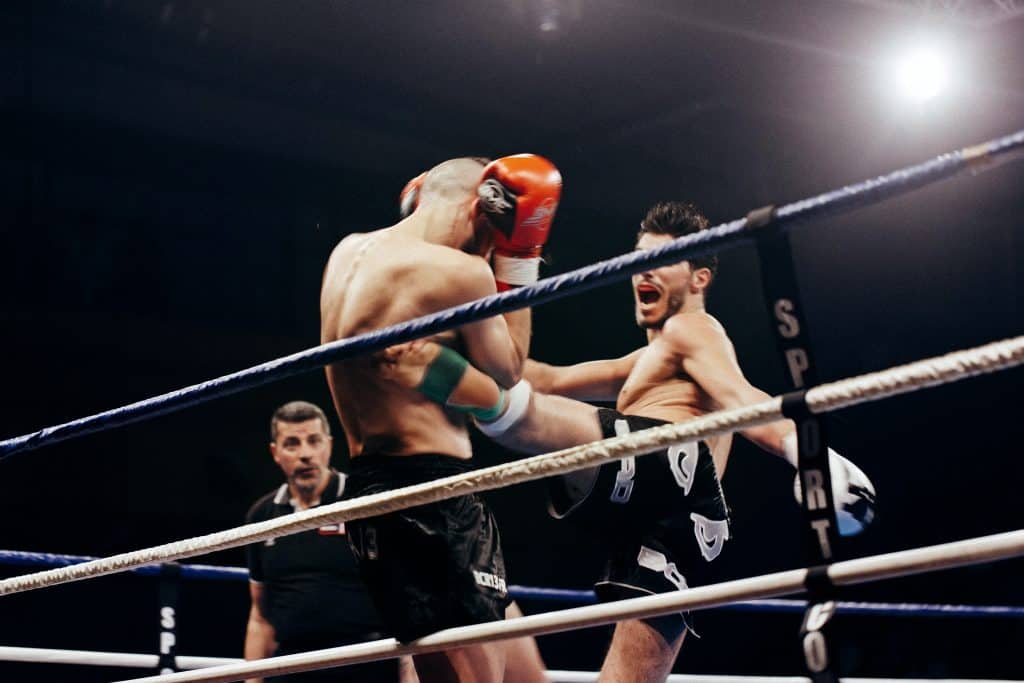
Whether the Spartan methods like hitting your shins with a stick or rolling them with glass bottles help condition your shinbones has yet to be proven. Most likely, they won’t get you those beneficial microfractures but instead cause macrofractures – large dents or cracks in your shinbones.
Did you see Van Damme in the intro video of this article? If you start like that, you won’t be kicking anything in the upcoming months – not even the softest bag. Moreover, you risk getting shin splints and other shin injuries that can permanently impair you.
How do you condition your shins?
In order to condition your shins effectively you have to keep kicking regularly, which means that it’s essential that you don’t get injured. So, kick the heavy bag and Thai pads, and practice them during technique training and sparring. This way, you slowly but steadily condition your shinbones.
When it comes to conditioning your shinbones for kicking, slow and steady indeed wins the race!
The (light) injuries that you can get from this are easily prevented or healed. You can even continue training with them (more about this later on), which is not the case with the Spartan conditioning methods.
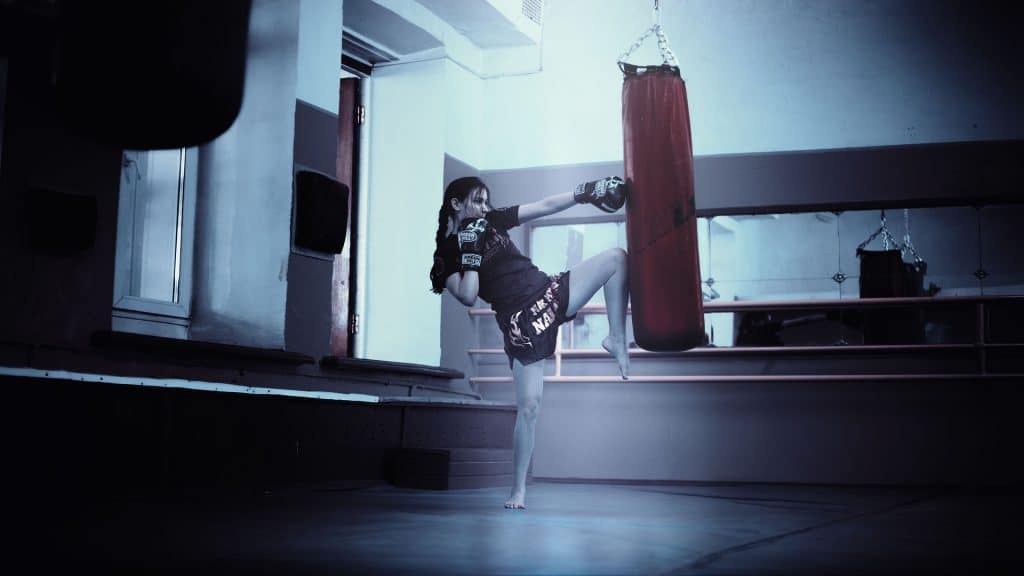
Should you kick with your shin or foot?
Although hitting your shin hurts at first, you should always aim to use them for kicking. By conditioning your shins, they become like baseball bats that you can kick with. Your feet, conversely, are made up of many small bones, ligaments, and tendons, which are easily injured and tough to harden.
So, while kicking the bag with your feet may feel less painful to begin with, you cannot condition them like your shins. Accordingly, you risk injuring them if you kick something else than a boxing bag – like in technique training, sparring or during a match. Moreover, once you develop your kicking technique and learn to kick with the hardest part of your shin – the spot right underneath your knee – you will feel far less pain upon impact.
Furthermore, with good kicking technique you can train more explosively and deliver more impact. This is because the technique helps you to guide your power so that you can keep your balance and hit your target on the right spot.
Nice bonus: if you generate more power in your kicks, training kicks will make you stronger, fitter, help you lose weight, and gain confidence. Besides, it’s amazing to see, hear, and feel the impact of your kicks – time and time again.
How can I harden my shinbones without kickboxing gear?
The best ways to harden your shinbones without kickboxing gear are:
- Weightlifting
- Running
- Rope skipping
- Hitting or rolling your shins with something that’s softer than your shinbones
How does weightlifting harden your shins?
During weightlifting – especially leg exercises like squats, deadlifts, calf raises, and box jumps – you don’t just train your muscles and tendons; you also put pressure on your shins. This pressure causes microfractures, which through cortical remodeling harden your shinbones upon recovery.
Although weightlifting won’t condition your shinbones as fast as practicing kicks does, it increases your strength and stability and helps to prevent injuries.
Why do Muay Thai fighters run?
Running before Muay Thai training:
- Fosters the type of discipline that you need to step in a ring
- Creates microfractures that condition your shinbones
- Improves your stamina and strengthens your leg, glute, and core muscles – the muscles used for kicking and punching
This is why running is an integral part of Muay Thai training culture. It’s not that Muay Thai fighters run to exhaustion every day, but in the more serious gyms in Thailand they’ll spend at least 15 minutes jogging before every training.

Why do Muay Thai fighters jump rope?
Rope skipping trains your foot and calf muscles (essential for footwork and kicking stability), improves your stamina, and trains you to move in various rhythms – a good skill to confuse your opponent. Also, the repeated impact of rope skipping helps to condition your shinbones for kicking.
When I was training Muay Thai during my “holiday” in Thailand, I was suffering from a runner’s knee. I thought I was smart by training my running before I went to Thailand, but instead I injured myself by going too far too quickly. Luckily, my trainers allowed me to skip rope instead of running, and although my calves never hurt so much it didn’t bother my knees in any way. Moreover, it was only a few days before my calves got used to the exercise and I could start playing around with different rhythms.
How to condition shins without kickboxing gear
You can harden your shinbones without kickboxing gear by using something that’s softer than your shins. For example, by foam rolling your shins or tapping them with a towel-wrapped stick. While these methods are not as effective as the ones mentioned above, they are easy to keep doing consistently.
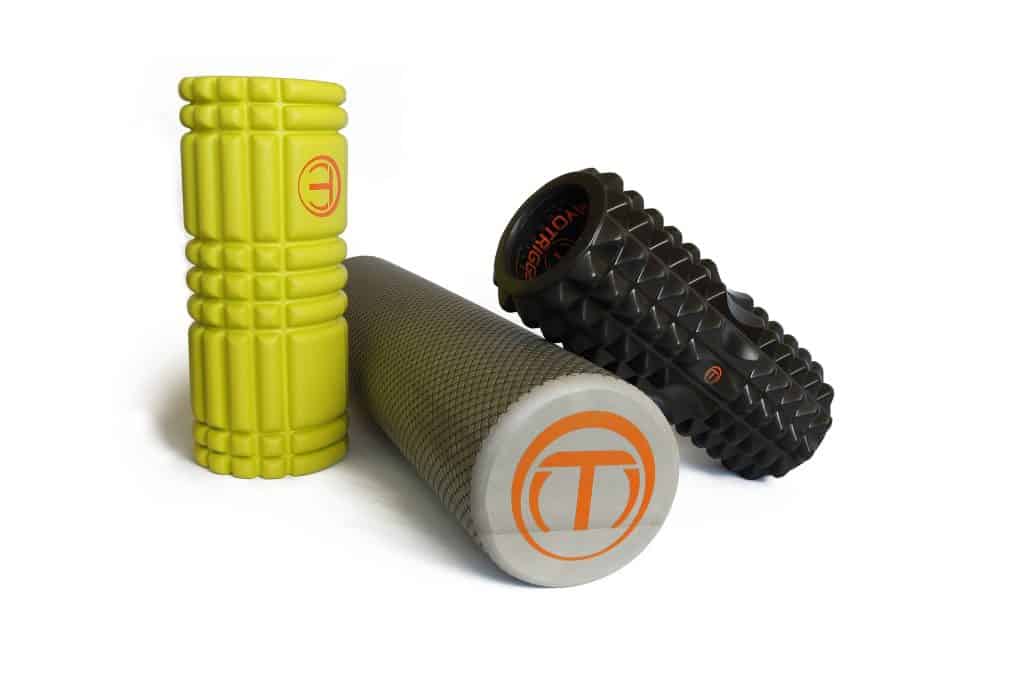
#Pro-tip: condition your shins by hitting them whenever you’re just hanging out, for example when you watch TV or listen to music.
What actually are shin splints?
Shin splints is when microfractures in your shins haven’t healed. This causes pain during running, rope skipping, weight lifting, and kicking. It’s important to let shin splints heal before you continue put heavy pressure on them, because otherwise your microfractures can turn into macrofractures.
How to treat shin splints and kicking injuries faster
Besides resting, you can speed up the recovery of shin injuries by
- Cooling them with an ice pack or cold compress
- Foam rolling your calves and the muscle next to your shin
- Heating the sensitive spots by rubbing them with a wet towel or jug and by rubbing them with tiger balm (see video below)
In addition, you can use an anti-inflammatory to speed up your recovery. While Ibuprofen is the most common option, regular use can damage your digestive system. Moreover, long-term use can ultimately cause internal inflammation instead of recovering it.
As an alternative, you can rub the injured parts of your shin with CBD-cream or take CBD oil or edibles as a full body anti-inflammatory. Although the effect of CBD builds up slower than ibuprofen, it has longer lasting effect without harming your body.
Is conditioning your shins bad?
As long as you slowly and gradually condition your shins, and give them enough time to heal and strengthen, conditioning your shins is not bad for you. So, invest in proper shin protectors (they will last for years), so you can wear them while kicking the bag or Thai pads if your shins are injured.
#Pro-tip: If kickboxing shin protectors aren’t enough, my trainer showed me the trick of cutting a (old) soccer shin protector and putting it on the injured spot behind the kickboxing shin protector. This way you can keep training during your recovery without worsening your injury or ruining your technique by trying to avoid hitting the painful spot(s) on your shin.
Do your shins ever stop hurting from kicking?
No, you will always feel (some) pain in your shins. If I’m not warmed up and kick a hard heavy bag, my shins still hurt. While the adrenaline caused by intense training helps to numb much of the pain (making even hitting a block or an accidental elbow bearable), this pain still comes around once I calm down.
The sooner you learn to accept this, the less you will experience the pain as a problem. If you’re practicing Muay Thai or Kickboxing, you have chosen a hard sport, but this means that you can grow a lot from it – both physically and mentally!
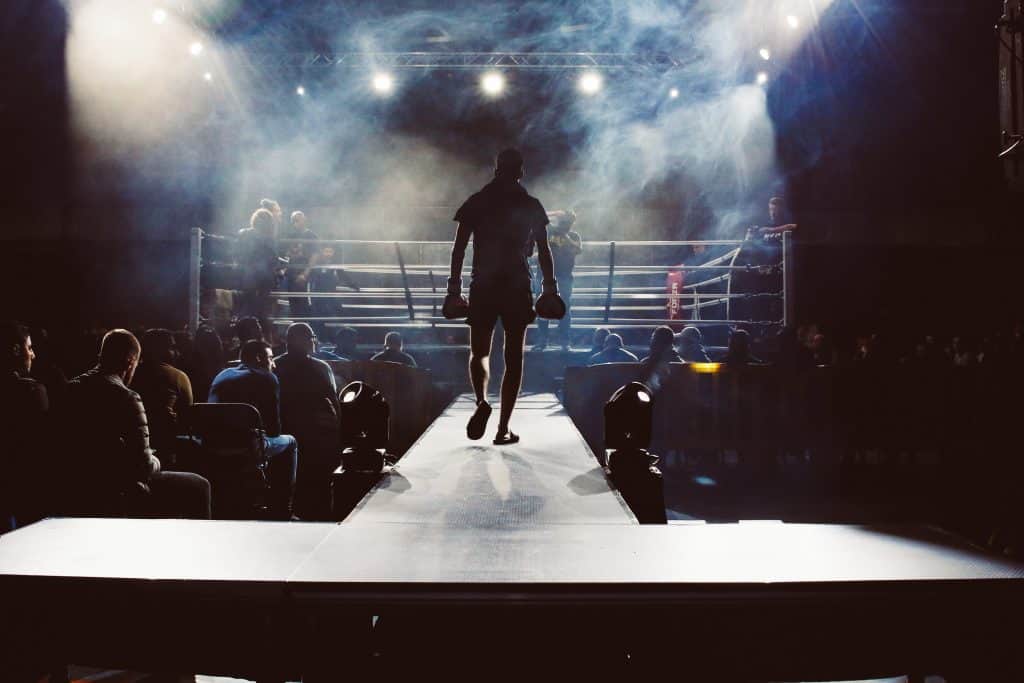
So, what does shin conditioning mean?
Shin conditioning means leaving your ego outside of the dojo. It means starting with kicking the softest bags and Thai pads available and treating your injuries smartly. This way you gradually condition and harden your shins, which allows you to keep coming to training and keep on growing.
- Written by Merlijn Broersma
Recent Posts
The previous articles covered the foundation of fighting nutrition: the best pre- and post-workout meals, fight day nutrition, and what your everyday diet should include. This article will cover the...
Previous articles have discussed pre- and post-workout meals, fight day nutrition, and how to train without eating anything at all, so called “fasted workouts.” That means that there’s one...